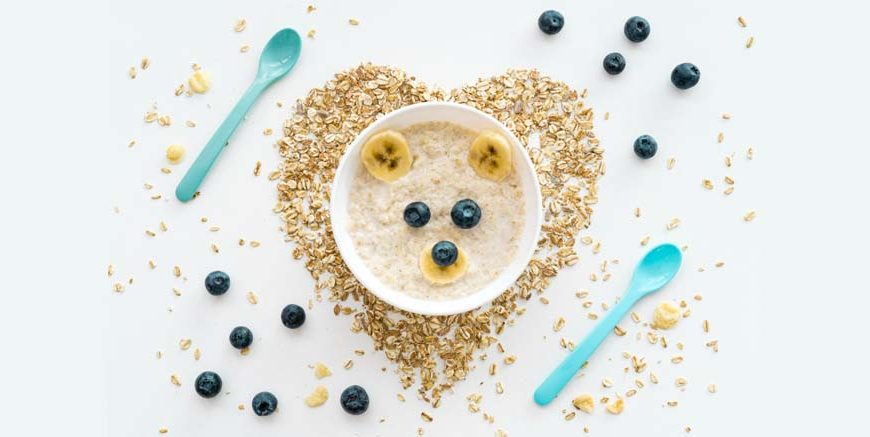The joy of welcoming a newborn is quickly accompanied by questions about feeding routines. Among the numerous options available to Indian parents, Cerelac baby food ranks high. However, at what age should one start giving their child Cerelac? How should you go about it? Is cerelac good for babies? When to start cerelac for baby? This blog is your guide for everything related to cerelac baby food including benefits, when is the best time to introduce cerelac in their diet as well as how you can prepare and feed this delicious dish to your little bundle of joy. Can you imagine seeing your baby’s face light up with joy as they take their first ever spoonfuls of cerelac – a mixture that delights their taste buds and brings twinkle into those cute little eyes…
Why Cerelac?
Cerelac has been a popular brand for years now especially when it comes to Indian babies’ nutrition needs. It is a healthy cereal-based meal fortified with essential vitamins and minerals necessary for supporting growth and development among infants. But is cerelac good for babies? Many mums love it because they find convenience in having such balanced diets given to their children.
When To Start Cerelac For Baby
One question that most new moms ask themselves quite often is ‘when should I introduce solid foods like cereals into my child’s diet?’ According to doctors specialising in paediatrics (paediatricians), babies can start eating solids around six months old; this is due to the fact that by now their digestive system has matured enough hence making them tolerate better solid meals than before . However, always consult your paediatrician first before introducing any new type of foodstuff into your infant ’s feeding program.
How To Give Cerelac
The process of introducing cereals should be done gradually over time step by step:
- Consultation With A Paediatrician: Before commencing on cerelacs ensure that you have talked with your baby’s doctor so as to know whether it’s appropriate or not.
- Start small: Begin this stage using little amounts like one teaspoonful mixed well with breast milk/formula until smooth enough to pass through the mouth easily swallowed down by the child .
- Look Out For Allergies: Check after a few feeds if there is any sign of allergy such as rash, diarrhoea and vomiting; should these symptoms arise stop feeding him/her immediately then consult a physician for further advice.
- Increase bit by bit : If no problem encountered while taking cereals then slowly increase the quantity fed each time over a couple of weeks till desired thickness attained.
Store and cook: Keep the powder in a sealed box. To prepare, blend one spoonful of the powder with water and boil on low heat while stirring continuously until smooth and creamy.
Homemade cerelac for babies
Home-made cerelac for babies is a healthy substitute for commercial brands that allows you to choose what goes into your baby’s food at a lower cost.
Tips for Feeding
Feeding time can be a joyful bonding experience with your infant. Below are some suggestions to help make it easier:
Establish a Routine: Develop a regular feeding schedule based on your baby’s natural hunger signals.
Don’t Rush Things: Babies can be messy eaters, so if they initially reject cerelac, don’t give up. Keep trying!
Avoid Forcing Food Down Their Throats: Never compel your child to eat. If they appear full or disinterested, stop feeding them until later.
Use Spoons: Use small spoons with soft tips when giving cerelac; this will aid in their motor development as well as introduce them to eating from utensils.
Keep Them Hydrated: Solid meals may not fulfil all their hydration requirements hence ensure they continue receiving sufficient amounts breast milk/formula feeds throughout.
Nutritional Benefits
Cerelac infant formula is designed to meet growing babies’ nutritional needs by providing:
Iron – Essential for brain development and prevention of anaemia.
Vitamins A, C & D – These support immune system functioning, skin health improvement as well bones formation respectively among others;
Minerals such as calcium and zinc which are important in building strong teeth plus bones;
Probiotics included in some types that can help enhance digestion while also boosting immunity levels;
Proteins necessary for body tissue repair especially during growth periods;
Carbohydrates supply energy required by the body daily alongside overall development too;
Omega-3 fatty acids required for improving vision clarity together with brain maturation process among other benefits.
Types of Cerelac
Cerelac is available in different flavours and compositions to cater for diverse taste preferences as well nutritional requirements. These consist of rice, wheat mixed fruits among others thereby ensuring balanced dieting throughout infancy.
Does Cerelac Make Babies Gain Weight?
Many parents ask, “ Does cerelac make babies gain weight?” Although when given appropriate amounts this can contribute towards healthy weight gain due its nutrients children need not worry about becoming too fat because of taking it excessively. All meals ought to be complemented with other solid foods including breast milk/formula feedings so that a complete diet is achieved.
Conclusion
Feeding your baby cerelac could serve as a convenient option while still providing nutrition necessary for their growth phase. There are numerous advantages associated with this act provided one starts at the right time and follows proper feeding instructions which will make transition into eating solids smooth both parent and child friendly.
At EuroKids, we recognize early childhood nutrition’s significance on overall wellbeing during life span hence our preschool curriculums foster holistic development within caring settings where children thrive best. Visit EuroKids now and find more information concerning programs designed specifically for preschoolers aimed at supporting various aspects of their early years’ needs.
Sources:
3.5_Developmental_Stages_in_Infant_and_Toddler_Feeding_NEW.pdf (infantandtoddlerforum.org)














